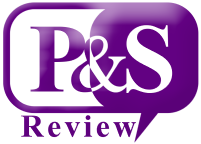Achieving Work-Life Balance: A Holistic Approach to Well-Being

In today’s fast-paced and interconnected world, achieving a healthy work-life balance has become a significant challenge for many individuals. The demands of modern work environments, coupled with personal responsibilities, can often lead to stress, burnout, and a diminished sense of well-being. However, by adopting a holistic approach that encompasses various aspects of life, individuals can strive to achieve a more harmonious and fulfilling balance between their professional and personal spheres.
Defining Work-Life Balance
Work-life balance refers to the equilibrium between the time and energy allocated to work-related activities and those devoted to personal pursuits, family, health, and leisure. It is not merely about dividing time between work and personal life but also about feeling fulfilled and content in both domains. Achieving work-life balance is crucial for maintaining overall well-being, reducing stress, and fostering positive relationships both at work and at home.
Setting Boundaries and Prioritizing
One of the fundamental aspects of achieving work-life balance is setting clear boundaries and priorities. Establishing clear limits on working hours, responding to emails, and taking breaks is essential to prevent work from encroaching on personal time. Prioritizing tasks and responsibilities, both at work and in personal life, can help individuals allocate their time and energy more efficiently, reducing the risk of feeling overwhelmed and overburdened.
Effective Time Management
Effective time management is a key factor in achieving work-life balance. By utilizing time management techniques such as prioritizing tasks, setting realistic deadlines, and minimizing distractions, individuals can enhance their productivity and create more time for personal activities and relaxation. Additionally, learning to delegate tasks and seeking support when necessary can alleviate the pressure of excessive work responsibilities.
Embracing Flexibility and Remote Work
The rise of remote work and flexible schedules has provided individuals with greater autonomy over their work hours and locations. Embracing these opportunities can contribute to a healthier work-life balance by allowing individuals to tailor their work schedules to accommodate personal commitments, hobbies, and family time. However, it is essential to establish clear boundaries and avoid overworking when working remotely, as the line between work and personal life can become blurred.
Cultivating Self-Care Practices
Prioritizing self-care is vital for achieving work-life balance. Engaging in regular physical exercise, practicing mindfulness and meditation, and ensuring adequate sleep are essential components of self-care that contribute to overall well-being. Additionally, setting aside time for hobbies, social activities, and relaxation fosters a sense of fulfillment and rejuvenation, ultimately enhancing one’s ability to manage work-related stress.
Establishing Supportive Work Environments
Employers play a crucial role in facilitating work-life balance for their employees. Cultivating a supportive work environment that values work-life balance, offers flexible work arrangements, and promotes open communication can significantly contribute to the well-being of employees. Encouraging regular breaks, providing access to mental health resources, and recognizing the importance of personal time can create a more sustainable and balanced workplace culture. Achieving work-life balance is a dynamic and ongoing process that requires conscious effort and adaptation to changing circumstances. By embracing a holistic approach that encompasses boundaries, effective time management, flexibility, self-care practices, and supportive work environments, individuals can strive to achieve a more harmonious balance between their professional and personal lives. Ultimately, work-life balance is not about perfect equilibrium but about fostering a sense of fulfillment, contentment, and well-being across all aspects of life





